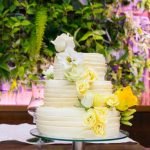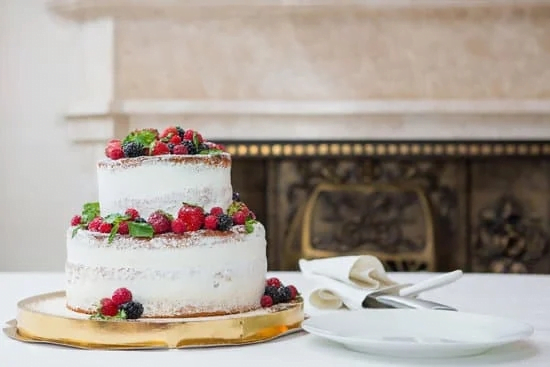Are you wondering how to make wedding invitations that will set the tone for your special day? Wedding invitations are not just a formality; they play a crucial role in establishing the style and theme of your wedding celebration. From the design and paper selection to personalized touches and printing options, there are various elements to consider when creating your wedding invitations.
The design of your wedding invitation sets the stage for what guests can expect on your big day. Whether you prefer traditional, modern, or personalized designs, your choice will influence the overall aesthetic of your wedding. Furthermore, the type of paper you select can also make a significant impact on the look and feel of your invitations. Options like cardstock, recycled paper, and handmade paper each create a different impression and add an extra layer of personalization.
Adding personal touches to your wedding invitations is another way to make them more meaningful. Custom monograms, wax seals, and ribbon embellishments can all elevate the design and reflect your unique style as a couple. Additionally, choosing the right printing method for your invitations is essential in achieving the desired look. Whether you opt for digital printing, letterpress, or foil stamping, each method has its own distinct characteristics that contribute to the overall presentation of your invitations.
Choosing the Right Design
When it comes to choosing the right design for your wedding invitations, it’s important to consider the overall style and theme of your wedding. Traditional designs often feature elegant floral motifs, classic script fonts, and an understated color palette. These types of invitations are perfect for formal or timeless weddings.
On the other hand, modern designs may incorporate bold typography, geometric patterns, and vibrant colors to create a contemporary look. For couples looking to showcase their unique personalities, personalized designs offer endless possibilities for customizing every aspect of the invitation.
Traditional Designs
Traditional wedding invitation designs often incorporate elements such as lace, embossing, and delicate floral patterns. A classic color scheme of ivory, cream, or soft pastels can exude elegance and sophistication.
Modern Designs
For couples seeking a more contemporary aesthetic, modern wedding invitations can feature clean lines, minimalist typography, and abstract artwork. Bold color choices or metallic accents can add a touch of flair to these sophisticated designs.
Personalized Designs
Personalized wedding invitations allow couples to express their individuality by incorporating elements that hold special meaning to them. Whether it’s a custom monogram representing the couple’s initials or an illustration that reflects their shared interests, personalized designs offer endless opportunities for creativity and personalization.
No matter which design direction you choose for your wedding invitations, it’s essential to ensure that the aesthetic aligns with the overall feel of your wedding celebration. From formal and traditional to avant-garde and personalized, there are countless options available for crafting the perfect invitation suite that sets the tone for your special day. With careful consideration and attention to detail, your wedding invitations are sure to leave a lasting impression on your guests.
Selecting the Perfect Paper
Wedding invitations are not just a piece of paper inviting guests to a celebration. They also set the tone for the event and give guests a glimpse of what to expect on the big day. One important aspect of wedding invitations is the type of paper used. The right kind can enhance the overall look and feel of the invitation, making it all the more special.
One popular option for wedding invitations is cardstock, which comes in various weights and finishes. It provides a sturdy base for invitations and allows for intricate designs and printing techniques. Recycled paper is another environmentally-friendly option that appeals to eco-conscious couples.
This type of paper lends a rustic and vintage look to wedding invitations, perfect for outdoor or nature-themed weddings. On the other hand, handmade paper adds a touch of luxury and uniqueness to invitations with its textured surface and individualized charm.
Each type of paper brings its own character to wedding invitations, allowing couples to choose one that best reflects their personal style and wedding theme. Understanding these options can help couples make an informed decision when selecting the perfect paper for their wedding invitations.
| Types of Paper | Description |
|---|---|
| Cardstock | Versatile, sturdy, suitable for various designs |
| Recycled Paper | Eco-friendly, rustic, vintage look |
| Handmade Paper | Luxurious, unique texture, personalized |
Adding Personal Touches
When it comes to making wedding invitations, adding personalized touches can truly make them stand out. Whether you opt for custom monograms, wax seals, or ribbon embellishments, there are countless ways to add a unique and special element to your wedding invitations. Custom monograms are a popular choice for couples looking to personalize their invitations. These can be designed to reflect the couple’s initials or even incorporate meaningful symbols or images.
Another elegant touch to consider is using wax seals on your wedding invitations. Wax seals add a luxurious and vintage-inspired flair to your invitations and can be customized with the couple’s initials, a meaningful symbol, or even a family crest.
Additionally, ribbon embellishments offer a beautiful way to add color and texture to your wedding invitations. From satin ribbons in soft pastel hues to rustic jute twine, the options are endless when it comes to incorporating ribbons into your invitation design.
Ultimately, adding personal touches such as custom monograms, wax seals, and ribbon embellishments allows couples to infuse their personality and style into their wedding stationery. These small details can make a big impact and leave a lasting impression on guests.
| Personalized Touch | Description |
|---|---|
| Custom Monograms | A popular choice for reflecting the couple’s initials or incorporating meaningful symbols |
| Wax Seals | Adds a luxurious and vintage-inspired flair; can be customized with initials or symbols |
| Ribbon Embellishments | Adds color and texture; countless options available for customization |
Printing Options
When it comes to creating your own wedding invitations, one of the most important decisions you’ll need to make is how you want to print them. The printing method you choose will have a big impact on the overall look and feel of your invitations, so it’s important to consider your options carefully.
Digital Printing
Digital printing is a popular choice for wedding invitations because it’s both cost-effective and versatile. This method uses a digital file to directly print onto the paper, allowing for a wide range of colors and designs. Digital printing is especially great for intricate designs and colorful artwork, making it perfect for modern or whimsical wedding themes.
Letterpress
If you’re looking for a more classic and elegant option, letterpress might be the way to go. This technique involves pressing inked metal type or plates onto paper, creating a beautiful debossed effect. Letterpress is known for its timeless look and luxurious feel, making it an ideal choice for traditional or formal weddings.
Foil Stamping
For couples who want their wedding invitations to truly shine, foil stamping is an excellent option. This method uses heat to transfer metallic foil onto the paper, creating a stunning metallic finish that adds a touch of luxury to any invitation suite. Foil stamping works well with bold typography and minimalistic designs, making it perfect for trendy and glamorous wedding styles.
No matter which printing method you ultimately choose, each has its own benefits and drawbacks. It’s important to consider factors such as budget, timeline, and the overall aesthetic you want to achieve when making this decision on how to make wedding invitations.
DIY vs Professional Printing
When it comes to making wedding invitations, one of the big decisions you’ll have to make is whether to DIY or hire a professional printer. Both options have their pros and cons, so it’s important to weigh them carefully before making a decision. Here are some things to consider:
- Cost: One of the biggest factors in deciding between DIY and professional printing is cost. DIY invitations can be more budget-friendly, especially if you have the time and resources to create them yourself. On the other hand, hiring a professional printer can result in higher quality invitations but at a higher cost.
- Time and Effort: DIY wedding invitations require a significant amount of time and effort, from designing and printing to assembling and addressing. If you’re short on time or simply prefer not to deal with the hassle, professional printing might be the way to go.
- Customization: DIY invitations offer complete customization, allowing you to create a design that perfectly reflects your personal style and wedding theme. Professional printers may have limited customization options, but they can still produce stunning results.
Ultimately, whether you choose DIY or professional printing for your wedding invitations will depend on your budget, timeline, and desired level of customization. Whichever option you choose, the most important thing is that your invitations reflect the joyous occasion ahead.
Remember that there are no right or wrong answers when it comes to making this decision – just do what feels right for you. Whether you’re creating simple or unique designs for your wedding invites there’s plenty of inspiration out there for able makers wanting something trendy and special. With these considerations in mind, get creative and enjoy the process of making your own unique wedding invitations.
Assembling the Invitations
When it comes to assembling wedding invitations, attention to detail is key. The way in which you put together your invitations sets the tone for the entire event and can make a lasting impression on your guests. To ensure that your wedding invitations are assembled with care and precision, follow these step-by-step instructions.
First, start by carefully stuffing the main invitation into the envelope. If you have multiple enclosure cards, such as RSVP cards or additional information cards, place them on top of the main invitation in order of size, with the smallest card on top. Make sure that all the cards are facing the same direction and have their wording upright.
Next, it’s time to address the envelopes. Use clear and legible handwriting or consider hiring a calligrapher for a more polished look. Be sure to include both the names of the recipients on the outer envelope and their addresses on the inner envelope if applicable. Double-check that all addresses are correct and up to date before sealing the envelopes.
Once your envelopes are addressed and sealed, it’s important to add postage before sending them out. Visit your local post office to determine appropriate postage based on size and weight or consider custom or vintage stamps for a unique touch. Keep in mind that square or heavy invitations may require additional postage.
By following these step-by-step instructions for assembling wedding invitations, you can ensure that every detail is handled with care and precision, setting the tone for a memorable celebration. Don’t forget to allow yourself plenty of time to complete this process so that you can avoid any last-minute stress. With this attention to detail, your wedding invitations are sure to make a lasting impression on your guests from start to finish.
Etiquette and Wording
When it comes to creating wedding invitations, the etiquette and wording are just as important as the design and paper choice. The wording on a wedding invitation sets the tone for the event and provides essential information for guests. It’s crucial to ensure that the wording is clear, concise, and follows proper etiquette. Additionally, addressing the envelopes correctly is an important detail that should not be overlooked.
When deciding on the wording for wedding invitations, it’s essential to consider the style of the wedding. For a more traditional ceremony, formal language and proper titles should be used when addressing guests.
On the other hand, for a more casual or modern event, couples have more freedom to use their own unique wording and language. It’s also important to include all pertinent information such as the date, time, location, and RSVP details in a clear and organized manner.
Properly addressing envelopes is another critical aspect of wedding invitation etiquette. When addressing married couples, both names should be included on the outer envelope with appropriate titles such as “Mr. and Mrs.” For unmarried couples or those in a long-term relationship living together, each person’s name should be listed separately on individual lines. It’s also important to use proper titles when addressing single guests or when inviting children.
Knowing how to make wedding invitations includes understanding these etiquette rules for both wording and addressing envelopes. By following these guidelines, couples can create elegant and respectful wedding invitations that set the perfect tone for their special day.
Conclusion
In conclusion, wedding invitations are an essential part of the wedding planning process, as they set the tone for the celebration and give guests a glimpse into what to expect on the big day. From choosing the right design and paper to adding personalized touches and selecting printing options, there are countless ways to make your wedding invitations unique and reflective of your style as a couple.
Whether you opt for traditional elegance or modern simplicity, the key is to let your creativity shine through while making your own wedding invitations.
When it comes to choosing the right design, consider elements that reflect your personal style and wedding theme. Whether it’s classic calligraphy, minimalist designs, or vibrant colors, there are endless possibilities for creating visually stunning invitations that will leave a lasting impression on your guests. Additionally, selecting high-quality paper can elevate the look and feel of your invitations, adding an extra touch of luxury to your wedding stationery.
While DIY printing may be a cost-effective option for some couples, hiring a professional printer can ensure a flawless finish and save time in the long run. Whichever route you choose, assembling the invitations with care and attention to detail is crucial in creating a beautiful final product.
Above all, remember that wedding invitation etiquette should be observed when addressing guests and deciding on wording options. Ultimately, making your own wedding invitations is an opportunity to let your personality shine and create a memorable keepsake for both you and your guests.
Frequently Asked Questions
Is It Cheaper to Design Your Own Wedding Invitations?
Designing your own wedding invitations can be cheaper than hiring a professional designer, especially if you have the creativity and skills to do so. DIY options, such as using online templates or graphic design software, can significantly lower costs.
How to Create a Marriage Invitation Card Free Online?
Creating a marriage invitation card for free online can be done using various websites and platforms that offer customizable templates and designs. Many of these platforms also allow you to download or print the final product for free or at a minimal cost.
What Kind of Paper Do I Need to Make Wedding Invitations?
When making wedding invitations, it’s essential to use high-quality paper that complements the design and theme of your wedding. Common choices include cardstock, cotton paper, and handmade paper, all of which provide a sturdy and elegant base for your invitations. Consider factors such as texture, weight, and color when choosing the paper for your wedding invitations.

Welcome to my blog about home and family. This blog is a place where I will share my thoughts, ideas, and experiences related to these important topics. I am a stay-at-home mom with two young children. I hope you enjoy reading it! and may find some helpful tips and ideas that will make your home and family life even better!





